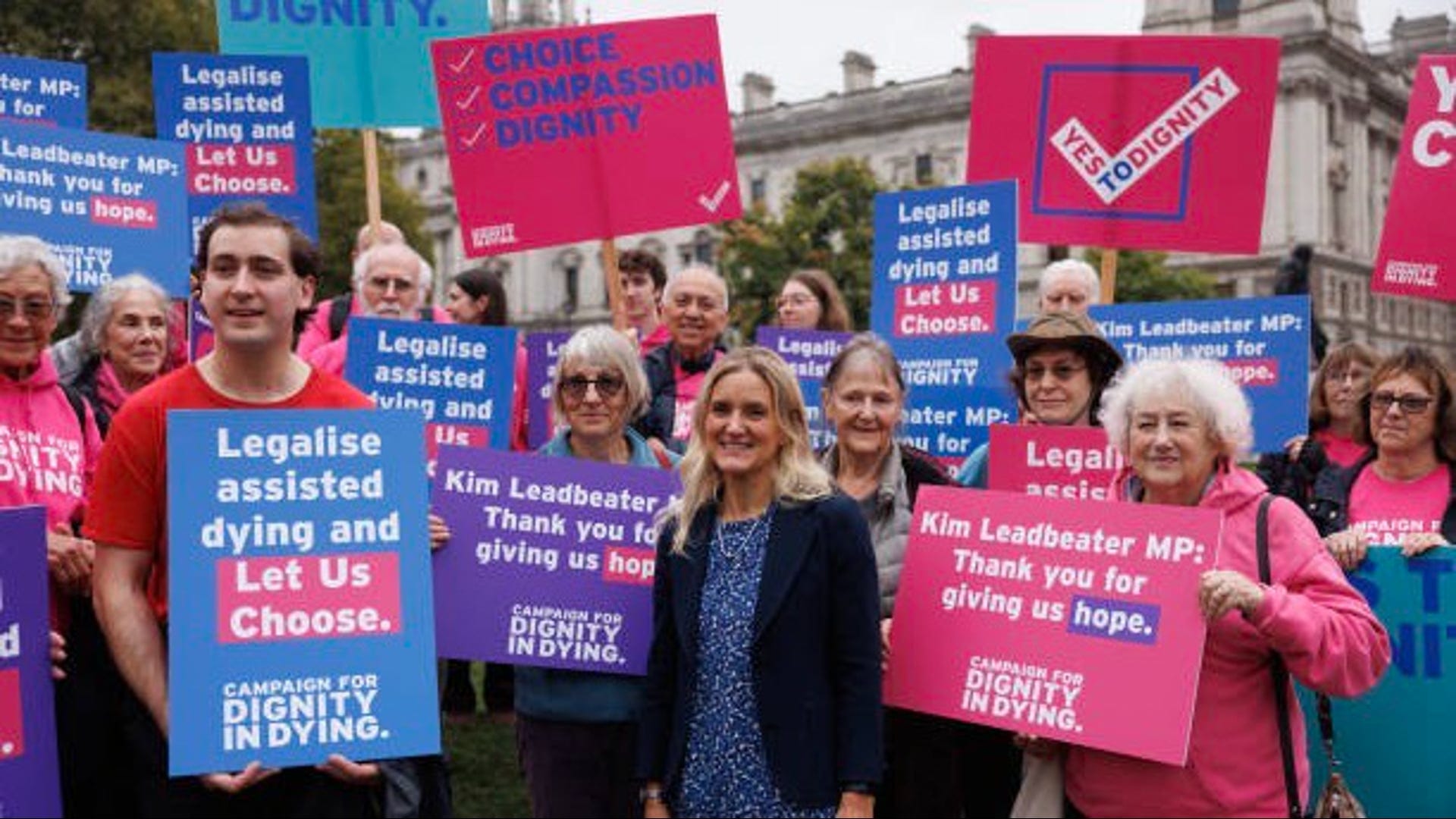Terri Schiavo's death 20 years ago sparked lingering debate about death and politics
Monday marks 20 years since the death of Terri Schiavo, whose landmark case became the symbol of the "right to die" movement, generated political controversy and sparked public outcry as her husband and family members took their fight over her fate to the courts.
Schiavo died on March 31, 2005, after a dragged-out legal and political battle that drew the attention of even President George W. Bush and his brother, then-Governor Jeb Bush of Florida.
The case thrust discussions about end-of-life care into the public consciousness, a topic that continues to provoke heightened emotions among Americans.
“It became the most reviewed, debated end-of-life case in history,” said Arthur Caplan, who heads the division of medical ethics at New York University’s Grossman School of Medicine.

The legal battle would unleash political and social forces that reverberate today.
“The Schiavo case set a new precedent for how personal medical decisions can be politicized and weaponized for broader ideological battles and victories in the culture wars,” Caplan wrote in a recent article co-authored for The Hastings Center, a Garrison, New York-based research institute focused on social and ethical issues in health care, science, and technology. “Evidence and science now take a back seat to politics, emotional appeals and spin.”
Who was Terri Schiavo?
Schiavo was 26 when she collapsed from cardiac arrest at her St. Petersburg, Florida, home in February 1990, falling into a coma when her brain was depleted of oxygen for several minutes.
When Schiavo emerged from the coma several months later, she was severely brain-damaged and in an unconscious, vegetative state, requiring a feeding tube hooked up to her stomach to provide sustenance.
However, as noted by New York University’s Grossman School of Medicine in a summary of the case, Schiavo was able to breathe and maintain a heartbeat on her own; her eyes were open and functional and she could move her limbs.
With the help of Schiavo’s parents and her husband, Michael, doctors tried unsuccessfully for years to help her regain consciousness. With no improvement in her condition, Michael Schiavo, her legal guardian, asserted that it would have been his wife’s wish to die and pushed to discontinue life support.
Schiavo's parents contested that course of action in court, eventually seeking the backing of Jeb Bush and state lawmakers. The Florida legislature passed "Terri's Law" in 2003, allowing the governor to mandate reinsertion of a feeding tube after courts had ordered it removed.
When state courts continued to side with Michael Schiavo, President Bush weighed in, signing a law permitting the Schiavo case to be heard in federal court. However, that court also sided with Michael Schiavo, and the U.S. Supreme Court declined to hear the case.
Terri Schiavo’s feeding tube was removed on March 18, 2005.
Ten years later, Michael Schiavo would accuse the Florida governor of using the case for “his own personal political gain” as Bush prepared to launch his 2016 presidential campaign.
Why did the Schiavo case cause such controversy?
The end-of-life debate involving a young woman and how and whether to keep her alive sparked intrigue and incited debate both public and among medical professionals – particularly nurses who oversaw the provision of food and water to such patients.
“People started paying attention because it was sort of a battle royale, a drama that drew media coverage because you had a husband squaring off against his wife’s parents and siblings,” Caplan said.
Because the situation wasn’t just a matter of shutting off a ventilator but cutting off food and water, “you were getting into nutrition and hydration, and that struck a very deep emotional chord,” Caplan said. “It’s one thing to shut off breathing, and another to take out a tube that’s giving sustenance.”
At the time, the question about what to do when terminally ill people had no advance directives but yet couldn’t communicate their wishes had come up in cases around the country, but Caplan said lawmakers rarely instituted any standards into law.
“It was controversial and political tricky, kind of like in-vitro fertilization is today,” Caplan said. “To put it another way, politicians ran for the hills on these kinds of questions.”
Even today, fewer than a dozen U.S. states have laws allowing end-of-life assistance.
The movement is gaining traction globally: As CNN reported, the British parliament in November approved a controversial bill that would legalize assisted dying, permitting terminally ill individuals with less than half a year to live and able to decide for themselves to take a life-ending medication.
The impact of the Terri Schiavo case
The Terri Schiavo case was “the last stand,” Caplan said, for those arguing that individuals sustained with food and water were different from those kept alive on breathing machines. In its aftermath, he said, some people did opt to discontinue feeding tubes for similarly affected family members in nursing homes around the country.
The Schiavo case also clarified that spouses generally have more power than families in such situations.
But the debate had another broader, lasting effect as well, Caplan maintained, galvanizing “right to life” forces that, despite the case’s outcome, became an enduring political force, fueling resistance against morning-after pills and undergirding the U.S. Supreme Court’s overturning of Roe v. Wade.
“If abortion was the lightning rod around the beginning of life, this was the lightning rod about the end of life,” he said. “The forces that rallied to keep Schiavo alive, siding with the parents, did not just go away.”